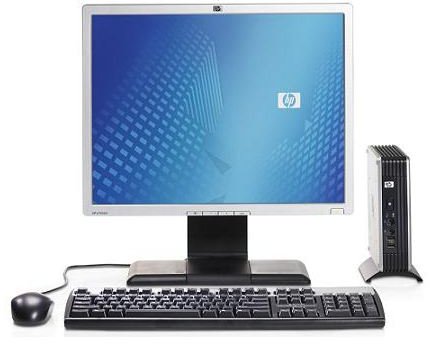Thin Client History - Modern IT Has Come Full Circle
Thin Client Overview
Thin clients are computer terminals or software programs that rely on an external computer to perform work. The thin client accepts
inputs into the system and displays the results of those inputs on its screen; the actual computations are performed on a distant server. Thin clients perform much like the “dumb” serial terminals of the past, only now thin clients run as clients of Windows or other operating systems.
Thin Client History
Thin client was the description of a computer terminal popularized by Oracle beginning in 1993. Because Oracle is server oriented software, clients do not require much in the way of computing power. Significant savings could be realized with Oracle over other models such as Microsoft’s that focused on computational power residing on the desktop. Although the term, “thin client”, began in the 1990s, thin client history dates back way before then.
Known as “dumb terminals”, the early thin clients were first used to interface with mainframe computers. Serial connections with the mainframe were used to send keystrokes to it and to display the results. All the programming and data were stored on the mainframe, with virtually no computational power residing with the terminal itself.
The advent of the PC in the 1980s and the decreased cost of computational power resulted in a new emphasis on localized, rather than centralized processing. This emphasis required operating systems and software to be installed and maintained on each individual computer. This sacrificed the centralized administration, security, and programming of the mainframe/dumb terminal configuration, ushering in the host of issues many deal with today.
Modern IT has come full circle. By provisioning centralized data security, backups and network / system administration, thin clients offer considerable flexibility and cost savings over traditional PC networks, while making it easier to monitor employee use of network resources. High speed networks enable thin clients to access Windows applications as fast as they would run on a local machine.
Thin clients can now come in different forms. Besides a traditional computer terminal, wireless thin clients are now deployed for use on LANs and cellular networks. Thin clients can also run as software on a networked PC. Ultra-thin clients expand on the thin client concept, but take it a step further by eliminating the need for a full operating system. An ultra-thin client comes equipped with a basic operating environment that allows configures the network and display options for the unit.
Thin Clients Here to Stay
Security concerns have been primarily responsible for driving IT back to the thin client model. Because data remains on site, the possibility of unauthorized data transfers is reduced. Centralized configurations make comprehensive backups easy since configurations, applications, and data are all in one place. With less processing power deployed to the desktop and to the field, IT departments can shave substantially on hardware costs. Furthermore, with fewer platforms to support, software overhead is also reduced, meaning there is substantially less IT overhead. This means that organizations are realizing IT labor savings that compound the hardware and software savings thin clients represent.
Perhaps the most significant development in thin client history is new requirements to reduce the impact of business on the environment. Because thin clients require fewer materials to manufacture, less power to operate, and less space in the landfill, they are ideal solutions to the need to run environmentally friendly businesses. Being one of the few cases where environmental responsibility actually adds to business profitability, thin client computing is likely to be a prevailing trend for many years to come.
